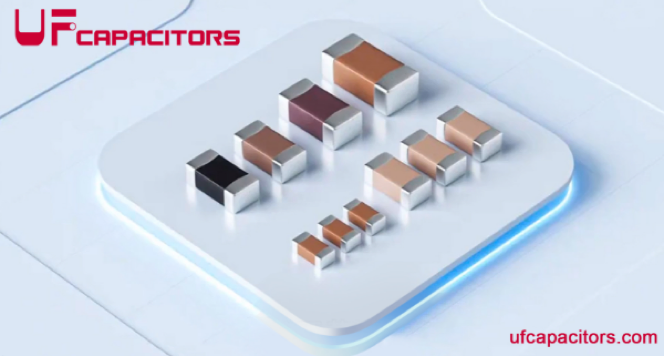The thickness of MLCC dielectric layer films is closely linked to product specifications, mainly reflected in three core aspects: capacitance, voltage level, and size. And these connections directly affect their applications in terminal products and circuits.

Under the same size and number of stacked layers, a thinner dielectric layer allows more electrode layers to be accommodated in the unit volume, resulting in a larger capacitance. For example, an MLCC with a 1μm dielectric layer can achieve several times the capacitance of a product with a 5μm dielectric layer under the same package (such as 0402). Therefore, high-capacitance products (above 10μF) usually require a thinner dielectric layer.
This characteristic makes them widely used in circuits that need to store more electrical energy. In smartphone power management circuits, high-capacitance MLCCs with thin dielectric layers are essential. They can stabilize the voltage output of the battery, ensuring that the phone's various components, like the processor and screen, work stably when the current changes suddenly. For instance, when you switch from making a call to playing a high-definition video, the current demand increases sharply, and these MLCCs can quickly release stored energy to make up for the temporary power gap.
The thickness of the dielectric layer is positively related to the voltage resistance capability. A thicker dielectric layer can withstand a higher voltage. Thus, high-voltage MLCCs (above 50V) need a thicker dielectric layer (usually tens of microns), while low-voltage ones (below 6.3V) can use a thin dielectric layer (several microns) to balance the needs of capacitance and voltage resistance.
In terminal products such as household air conditioners, the power supply circuit needs to handle higher voltages. High-voltage MLCCs with thick dielectric layers are used here to filter out noise in the power supply. They prevent voltage fluctuations from affecting the operation of the compressor and control board, ensuring the air conditioner runs smoothly. On the contrary, in low-voltage circuits like the USB charging module of a tablet, low-voltage MLCCs with thin dielectric layers are used. They help stabilize the 5V voltage output, making the charging process safer and more efficient.
Small-sized packages (such as 0201, 0402) are limited by space, so the dielectric layer needs to be thinned to increase capacitance (otherwise, enough layers cannot be stacked in the limited volume). Large-sized packages (such as 2225) can adapt to high-voltage scenarios by thickening the dielectric layer or achieve ultra-high capacitance by keeping a thin thickness.
Smartwatches, which pursue miniaturization, use a lot of 0201 and 0402 packaged MLCCs. Due to their small size, the dielectric layer is very thin (for example, the ceramic dielectric film of 0201 products from Sanhuan Group is about 1μm per layer). These MLCCs are used in the watch's sensor circuits, such as the heart rate monitoring circuit, to ensure stable signal transmission in a limited space.
In contrast, some industrial control equipment with larger internal space, like frequency converters, often use 2225 packaged MLCCs. Depending on the specific circuit requirements, their dielectric layers can be designed to be thin or thick. If it is used in a part that requires high capacitance to store energy, a thin dielectric layer is chosen; if it needs to withstand high voltage in the power conversion part, a thick dielectric layer is adopted.
In conclusion, the thickness of the dielectric layer is a key parameter to balance the three core specifications of MLCC: "capacitance, voltage resistance, and size". Different product specifications correspond to specific dielectric layer thickness designs, which further determine their applications in various terminal products and circuits.
UF Capacitors is an ISO9001-certified manufacturer in China, founded in 1995. We hold military qualifications for tantalum capacitors, MLCC, and other products. Additionally, we have a UL-recognized test laboratory located at our factory site.
Our marketing position is to provide a superior alternative to first-tier brands such as TDK, Murata, AVX, EPCOS, Vishay, and Panasonic. We offer similar quality but at better prices, with faster lead times and excellent service. With extensive experience working with renowned international companies like GE, Philips, Jabil, and Flex, we have built a strong reputation.
UF Capacitors serves the consumer electronics, computing, communications, and industrial markets. As a professional Chinese electronic components manufacturer, we are dedicated to delivering high-quality electronic components, exceptional management, strict quality control systems, and excellent sales service. We strive to foster mutually beneficial partnerships and drive business growth.
UF capacitors produce PIN to PIN alternative to replace tier-one brands as following.
|
Photo |
UF Capacitors' |
#Vishay |
#TDK/Epcos |
Murata |
#AVX |
#Kemet |
|
|
#VJ0201 Series |
#C1005 Series |
#GRM Series |
#0603 Series |
#C0201 Series |